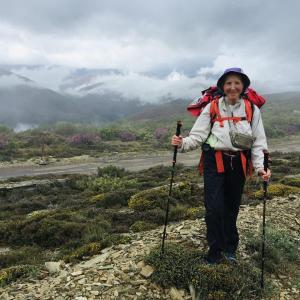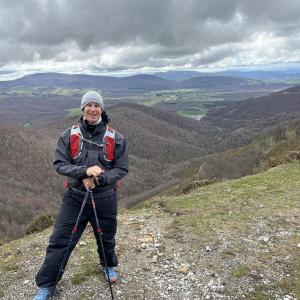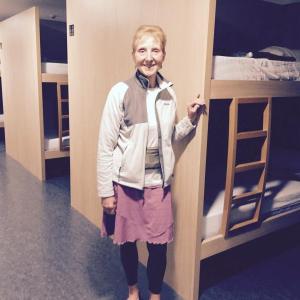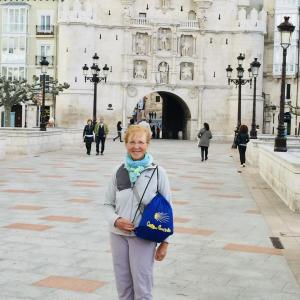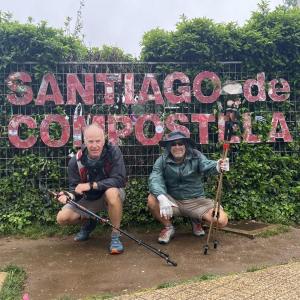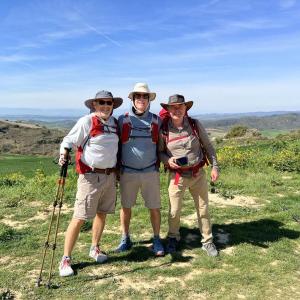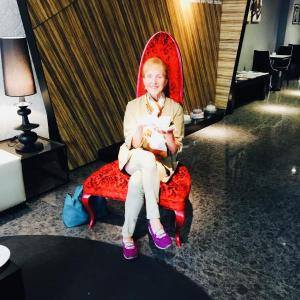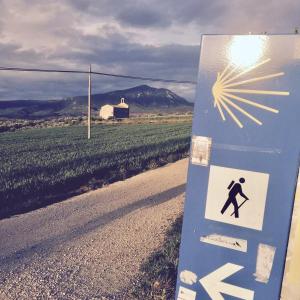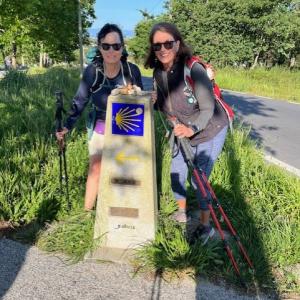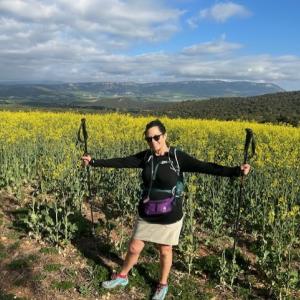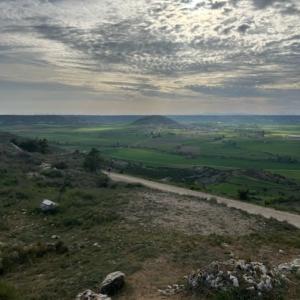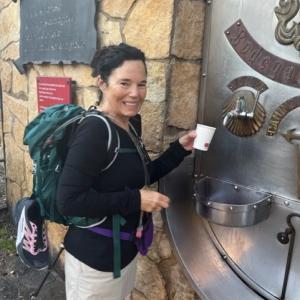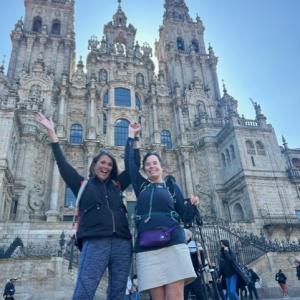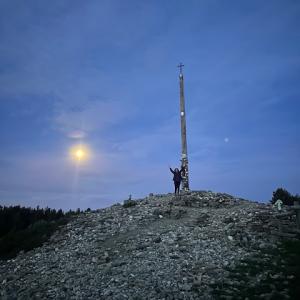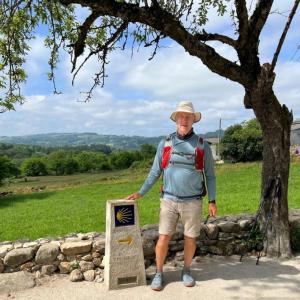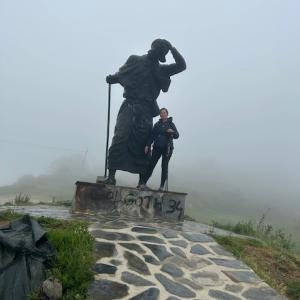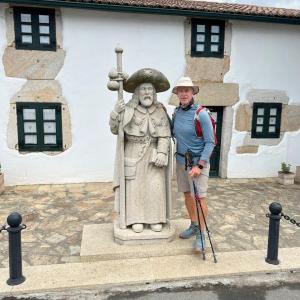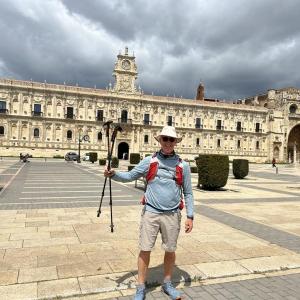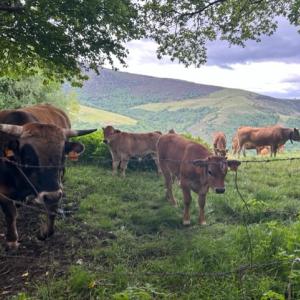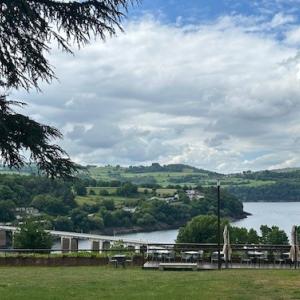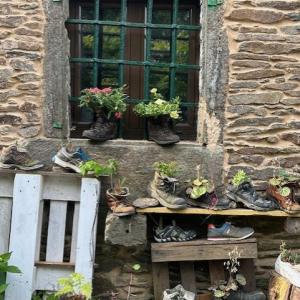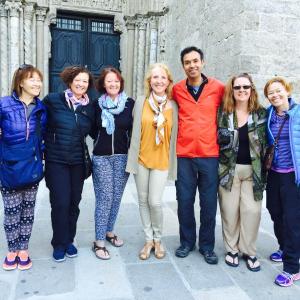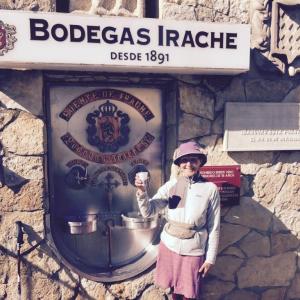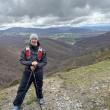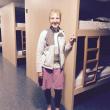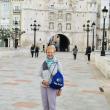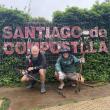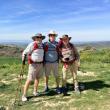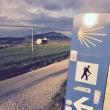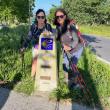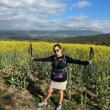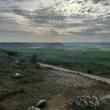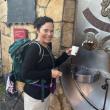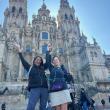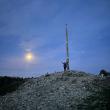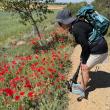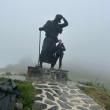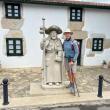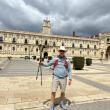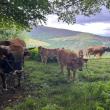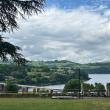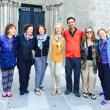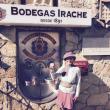Pilgrimage along The Way of St. James
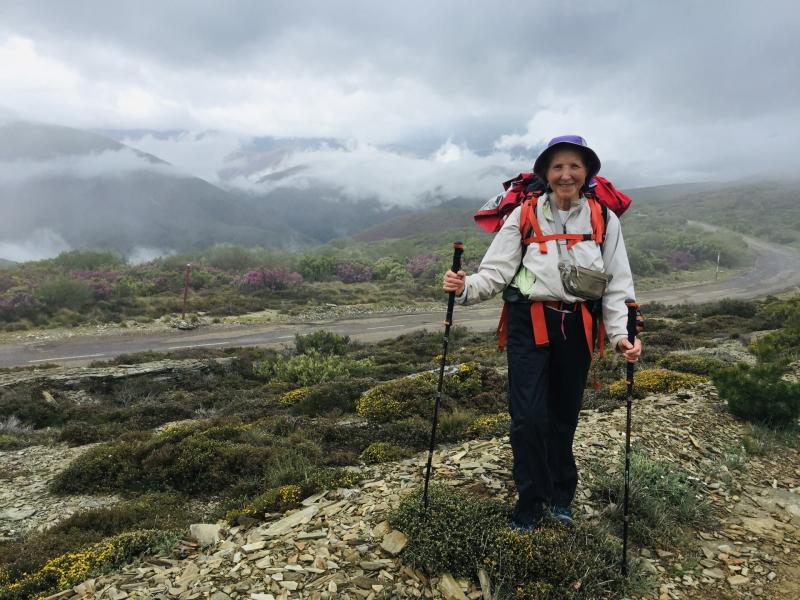 Alina Blakesley on the Camino de Santiago, a.k.a. The Way of St. James, in Spain, 2021. Courtesy of Alina Blakesley
Alina Blakesley on the Camino de Santiago, a.k.a. The Way of St. James, in Spain, 2021. Courtesy of Alina Blakesley
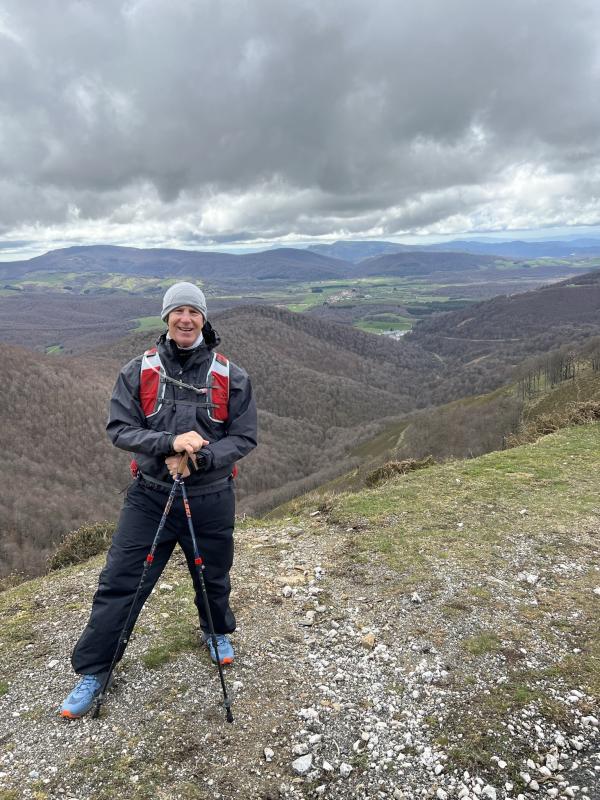 Mark Spencer during his pilgrimage on “The Way.” Courtesy of Mark Spencer
Mark Spencer during his pilgrimage on “The Way.” Courtesy of Mark Spencer
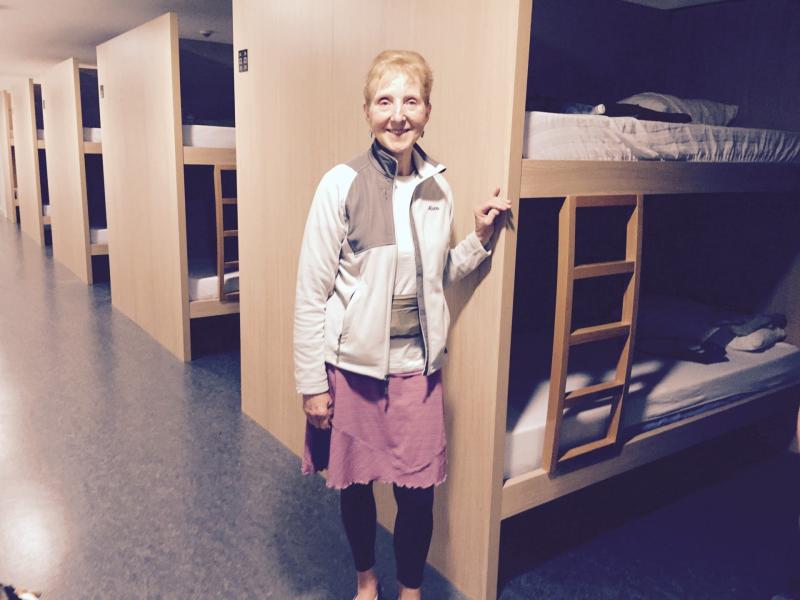 Alina Blakesley at a hostel. Courtesy of Alina Blakesley
Alina Blakesley at a hostel. Courtesy of Alina Blakesley
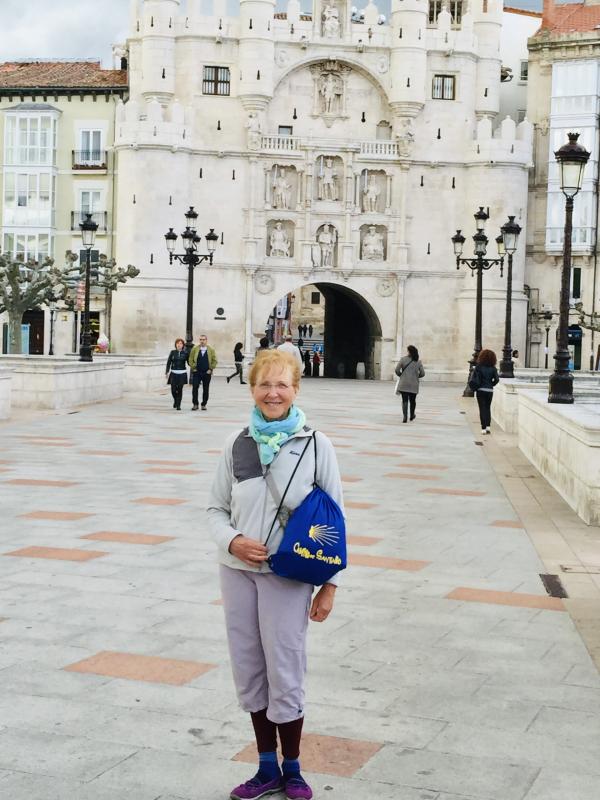 Alina Blakesley at her journey’s end in Santiago de Compostela Cathedral in Galicia. Courtesy photo
Alina Blakesley at her journey’s end in Santiago de Compostela Cathedral in Galicia. Courtesy photo
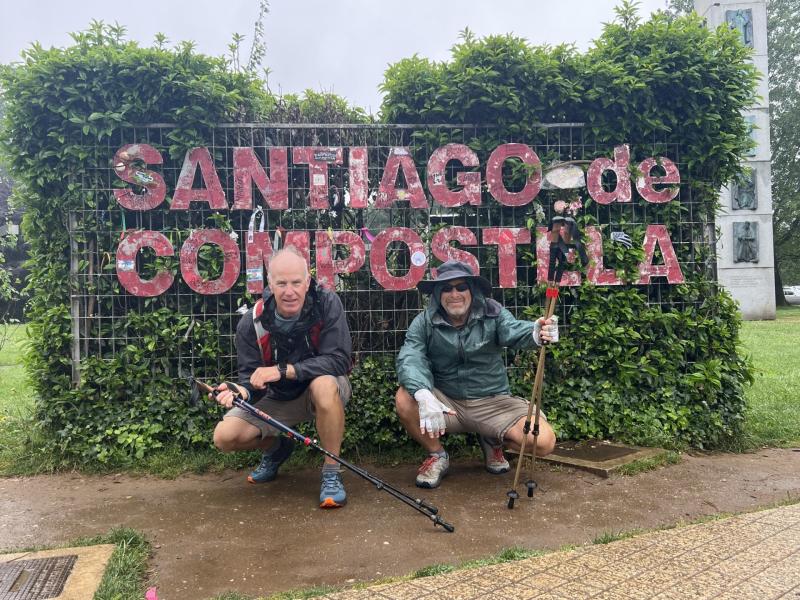 Mark and Mark as they were known on The Way of St. James, Wynz and Spencer, respectively. Courtesy of Mark Spencer
Mark and Mark as they were known on The Way of St. James, Wynz and Spencer, respectively. Courtesy of Mark Spencer
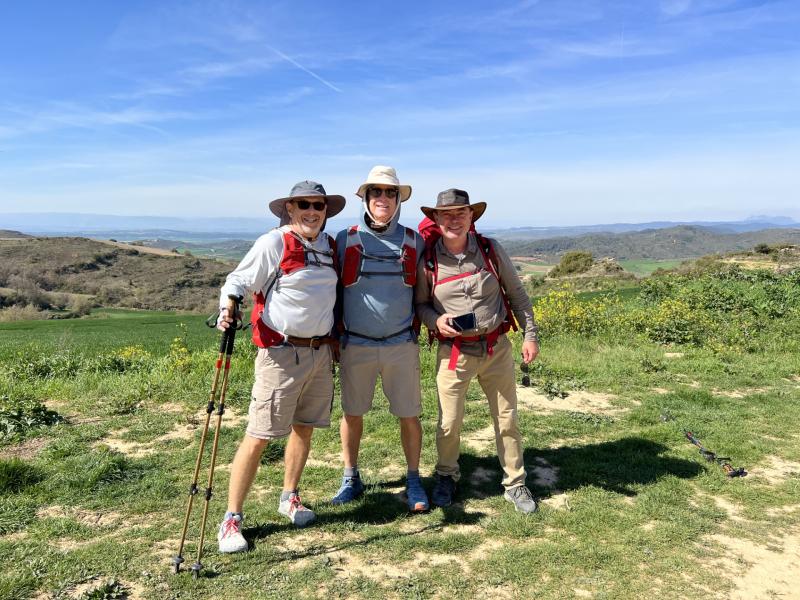 Three pilgrims on the Camino de Santiago, aka The Way of St. James. Courtesy of Mark Spencer
Three pilgrims on the Camino de Santiago, aka The Way of St. James. Courtesy of Mark Spencer
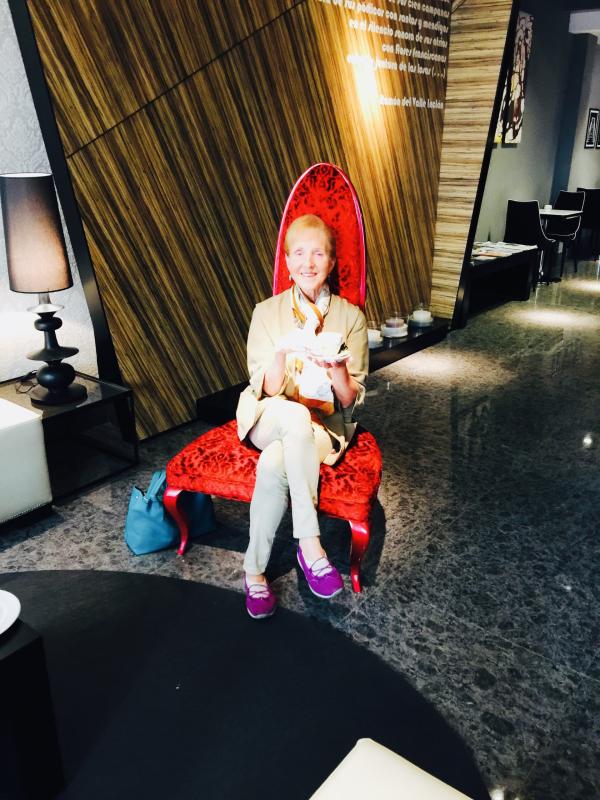 Alina Blakesley enjoys a tea time at journey’s end. Courtesy photo
Alina Blakesley enjoys a tea time at journey’s end. Courtesy photo
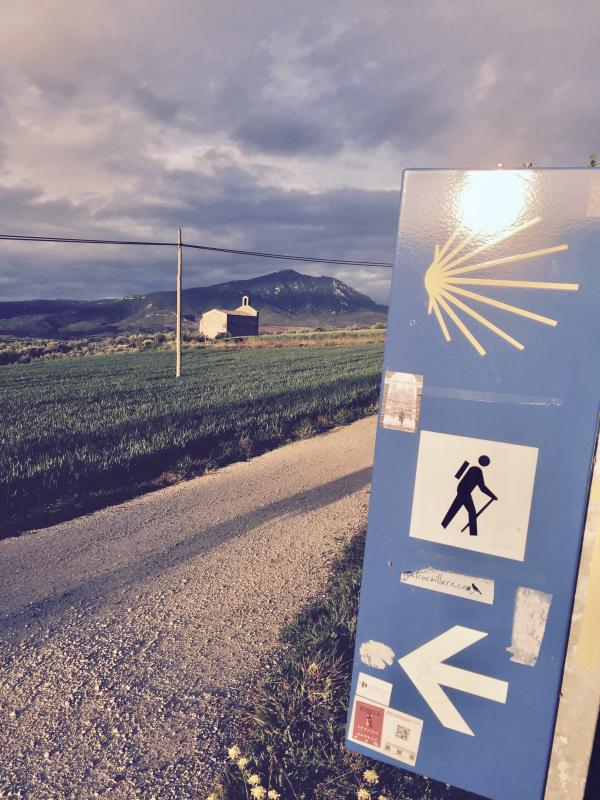 Courtesy of Andrea Neilsen
Courtesy of Andrea Neilsen
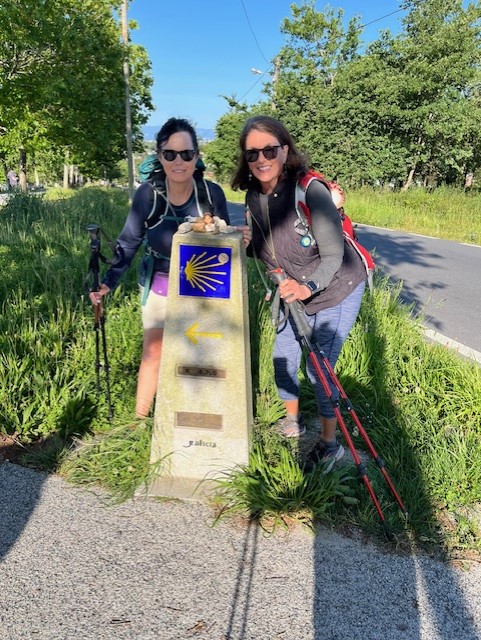 Andrea Neilsen and Lonnie Gisi. Courtesy photo
Andrea Neilsen and Lonnie Gisi. Courtesy photo
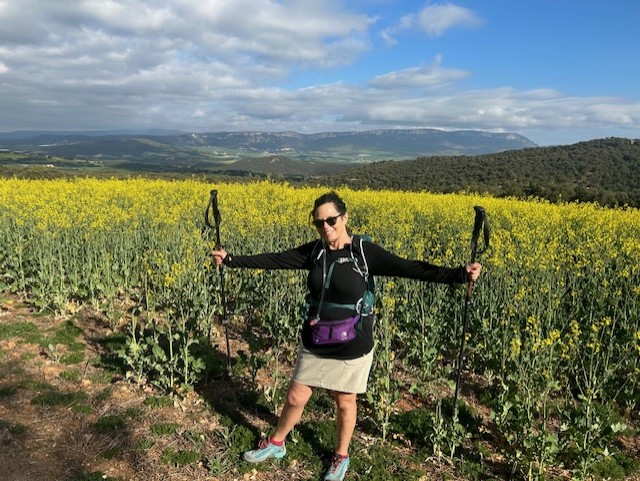 Andrea Neilsen on the Camino de Santiago. Courtesy photo
Andrea Neilsen on the Camino de Santiago. Courtesy photo
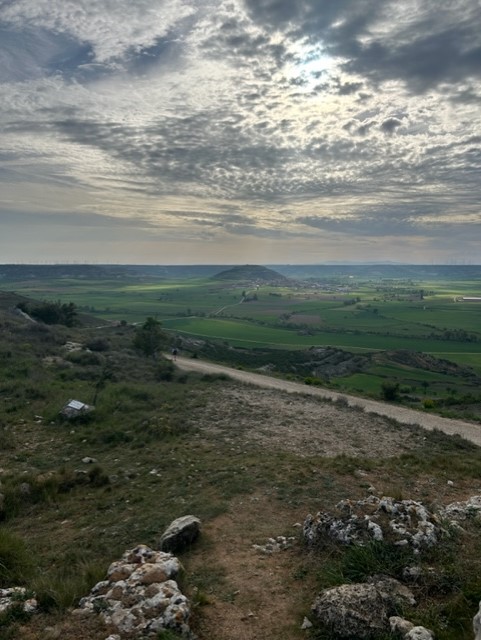 Andrea Neilsen photo
Andrea Neilsen photo
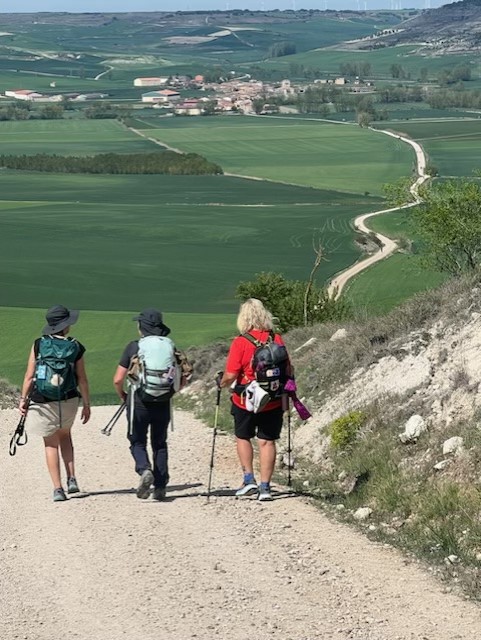 Andrea Neilsen, Lonnie Gisi and another pilgrim on the Camino. Courtesy photo
Andrea Neilsen, Lonnie Gisi and another pilgrim on the Camino. Courtesy photo
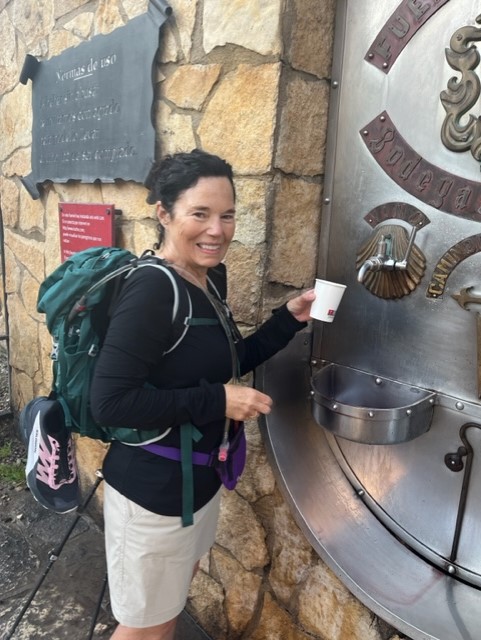 Andrea Neilsen. Courtesy photo
Andrea Neilsen. Courtesy photo
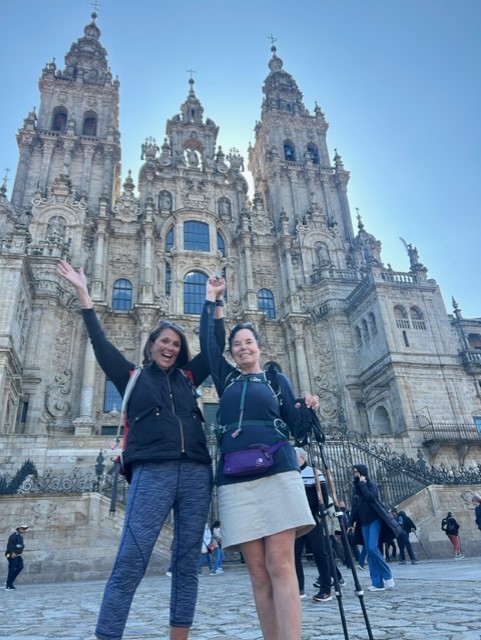 Andrea Neilsen and Lonnie Gisi’s victory photo with the Santiago de Compostela Cathedral in the background. Courtesy photo
Andrea Neilsen and Lonnie Gisi’s victory photo with the Santiago de Compostela Cathedral in the background. Courtesy photo
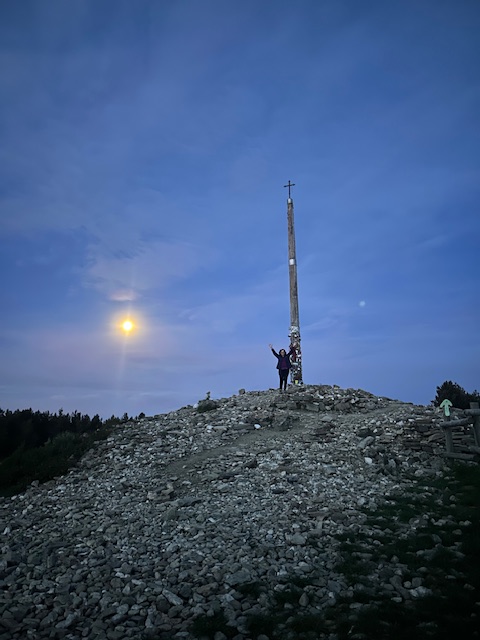 The Iron Cross. Andrea Neilsen photo
The Iron Cross. Andrea Neilsen photo
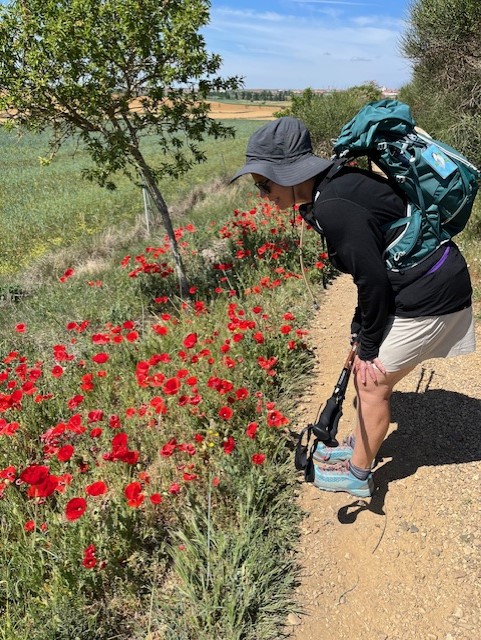 Courtesy of Andrea Neilsen
Courtesy of Andrea Neilsen
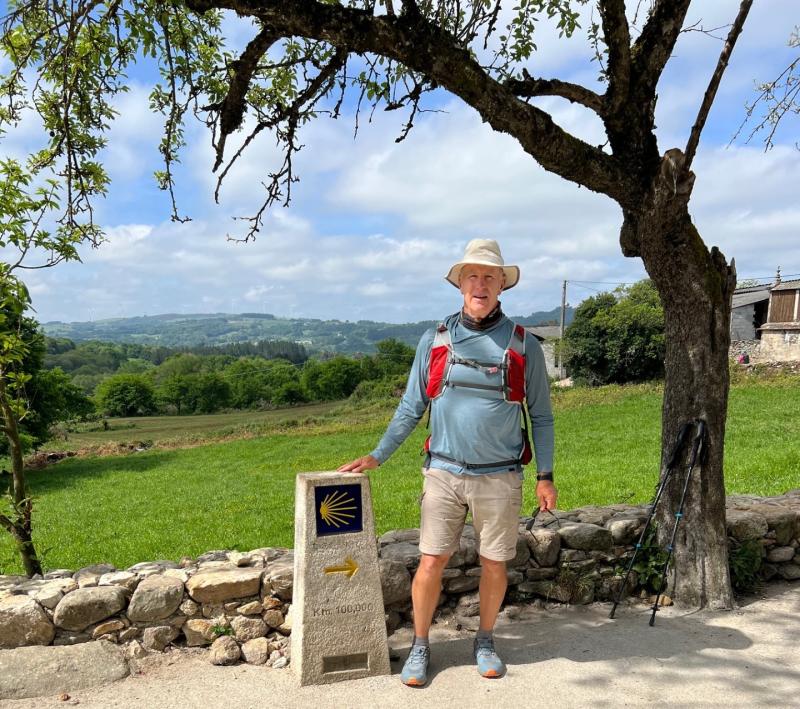 Mark Spencer en route to Galicia. Courtesy photo
Mark Spencer en route to Galicia. Courtesy photo
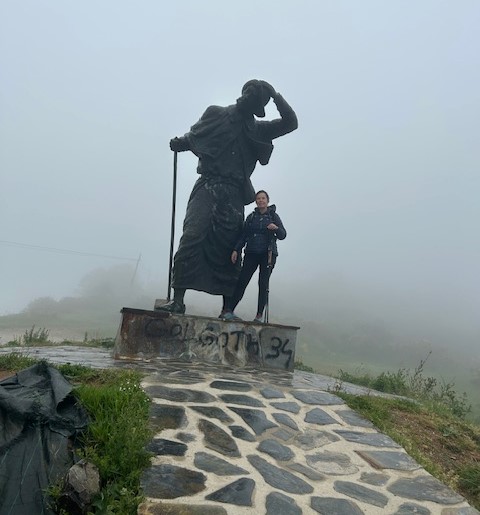 Bronze sculptures are found on many of the pilgrimage routes to Galicia. Courtesy of Andrea Neilsen
Bronze sculptures are found on many of the pilgrimage routes to Galicia. Courtesy of Andrea Neilsen
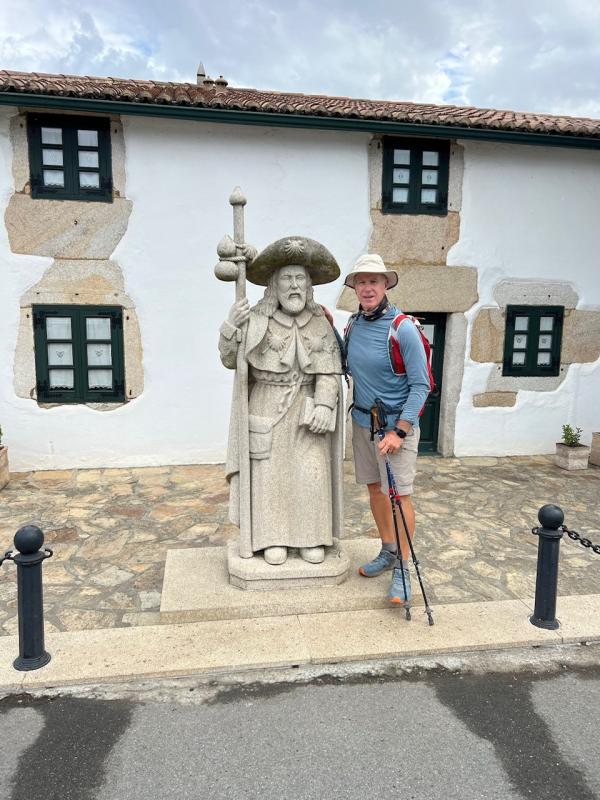 Courtesy of Mark Spencer
Courtesy of Mark Spencer
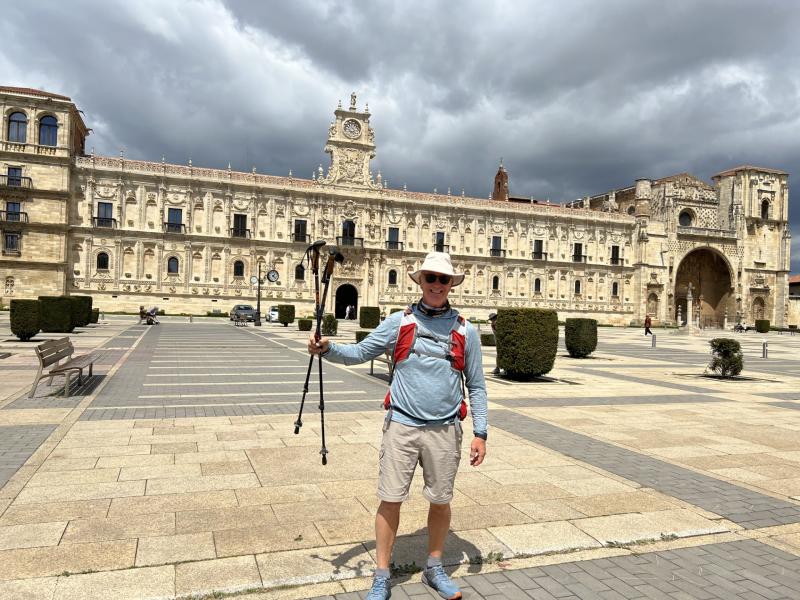 Mark Spencer’s “I did it!” photo with the Santiago de Compostela Cathedral in the background. Courtesy photo
Mark Spencer’s “I did it!” photo with the Santiago de Compostela Cathedral in the background. Courtesy photo
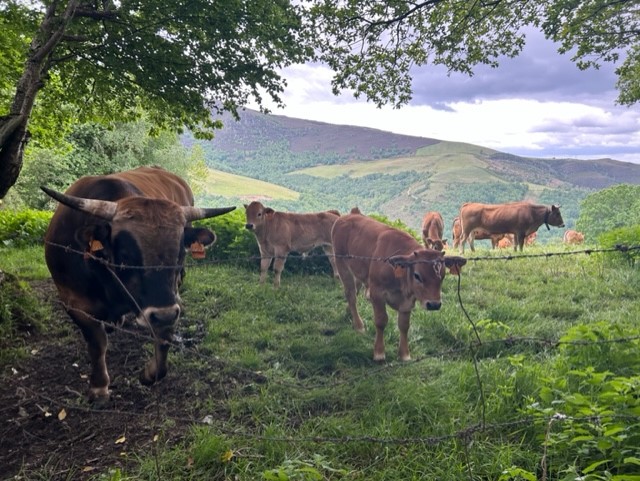 Andrea Neilsen photo
Andrea Neilsen photo
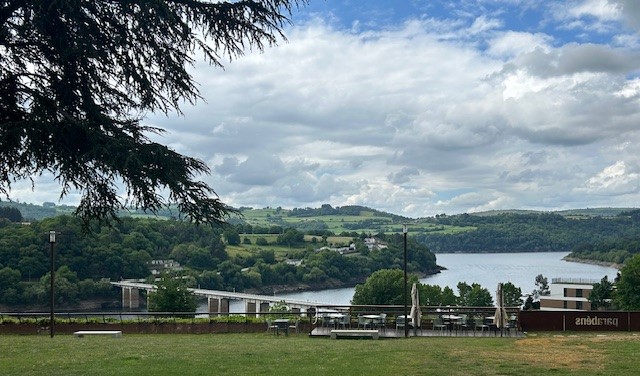 Andrea Neilsen photo
Andrea Neilsen photo
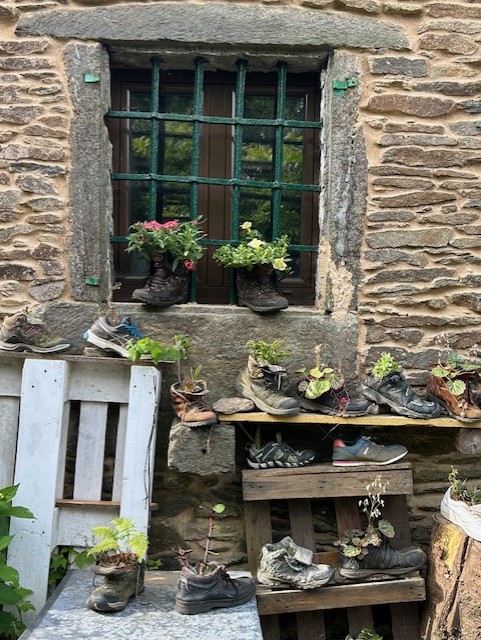 Lost walking shoes become planters along The Way of St. James. Andrea Neilsen photo
Lost walking shoes become planters along The Way of St. James. Andrea Neilsen photo
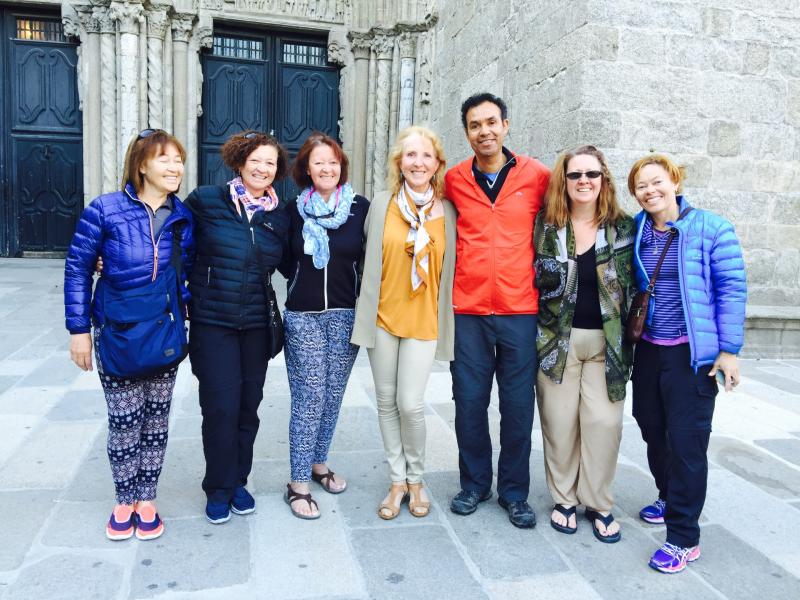 Alina Blakesley, center, with a group of fellow pilgrims in 2015. Courtesy photo
Alina Blakesley, center, with a group of fellow pilgrims in 2015. Courtesy photo
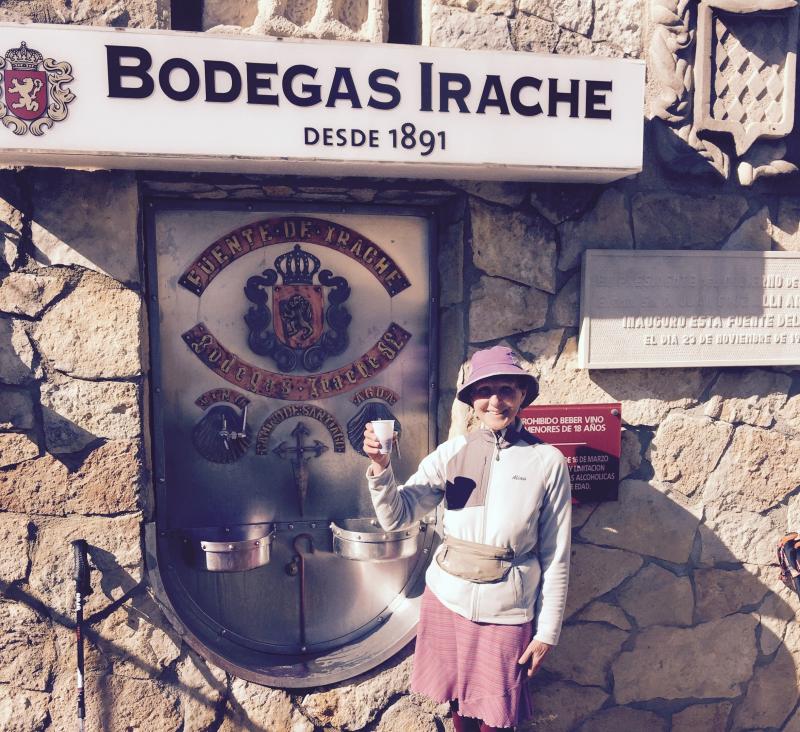 Courtesy of Alina Blakesley
Courtesy of Alina Blakesley
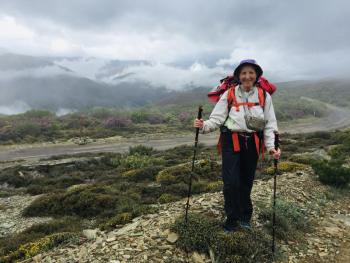 Alina Blakesley on the Camino de Santiago, a.k.a. The Way of St. James, in Spain, 2021. Courtesy of Alina Blakesley
Alina Blakesley on the Camino de Santiago, a.k.a. The Way of St. James, in Spain, 2021. Courtesy of Alina Blakesley
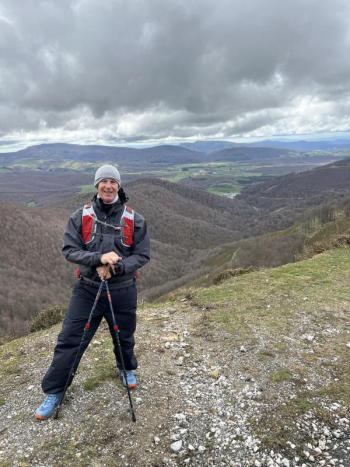 Mark Spencer during his pilgrimage on “The Way.” Courtesy of Mark Spencer
Mark Spencer during his pilgrimage on “The Way.” Courtesy of Mark Spencer
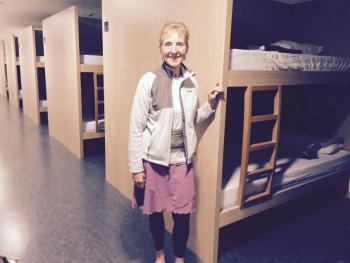 Alina Blakesley at a hostel. Courtesy of Alina Blakesley
Alina Blakesley at a hostel. Courtesy of Alina Blakesley
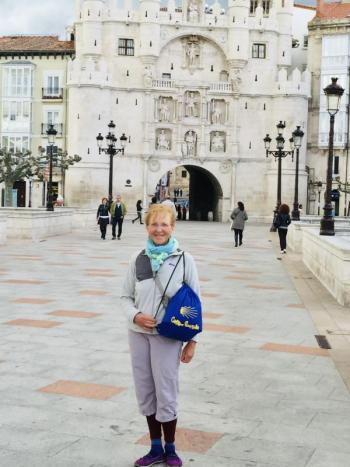 Alina Blakesley at her journey’s end in Santiago de Compostela Cathedral in Galicia. Courtesy photo
Alina Blakesley at her journey’s end in Santiago de Compostela Cathedral in Galicia. Courtesy photo
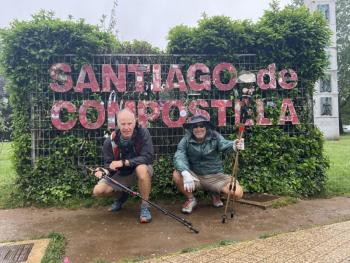 Mark and Mark as they were known on The Way of St. James, Wynz and Spencer, respectively. Courtesy of Mark Spencer
Mark and Mark as they were known on The Way of St. James, Wynz and Spencer, respectively. Courtesy of Mark Spencer
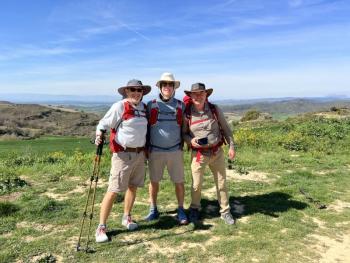 Three pilgrims on the Camino de Santiago, aka The Way of St. James. Courtesy of Mark Spencer
Three pilgrims on the Camino de Santiago, aka The Way of St. James. Courtesy of Mark Spencer
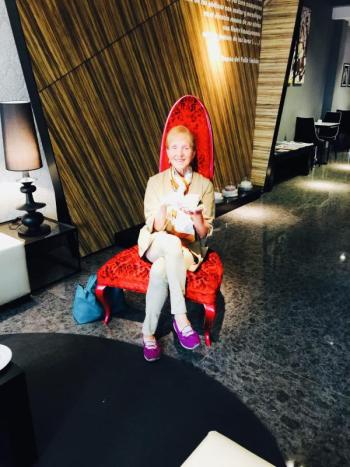 Alina Blakesley enjoys a tea time at journey’s end. Courtesy photo
Alina Blakesley enjoys a tea time at journey’s end. Courtesy photo
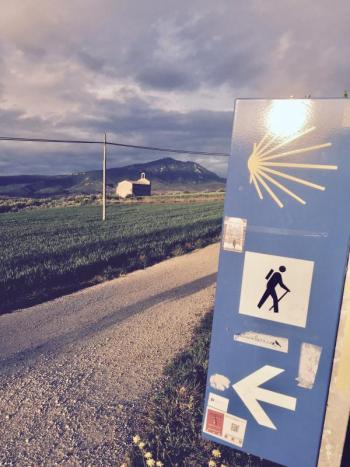 Courtesy of Andrea Neilsen
Courtesy of Andrea Neilsen
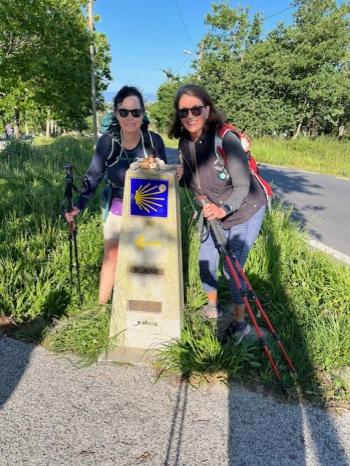 Andrea Neilsen and Lonnie Gisi. Courtesy photo
Andrea Neilsen and Lonnie Gisi. Courtesy photo
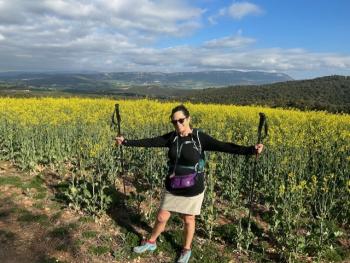 Andrea Neilsen on the Camino de Santiago. Courtesy photo
Andrea Neilsen on the Camino de Santiago. Courtesy photo
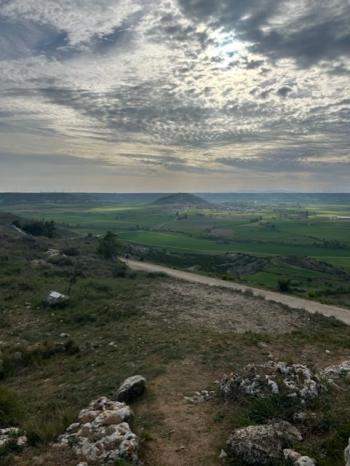 Andrea Neilsen photo
Andrea Neilsen photo
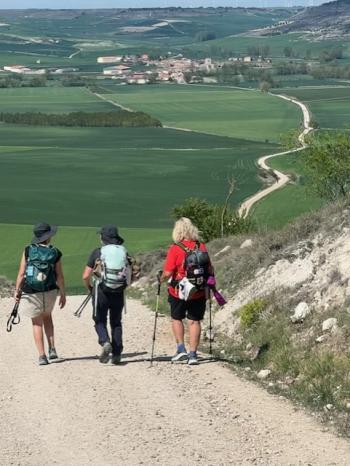 Andrea Neilsen, Lonnie Gisi and another pilgrim on the Camino. Courtesy photo
Andrea Neilsen, Lonnie Gisi and another pilgrim on the Camino. Courtesy photo
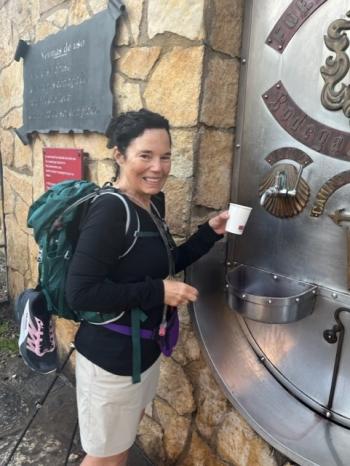 Andrea Neilsen. Courtesy photo
Andrea Neilsen. Courtesy photo
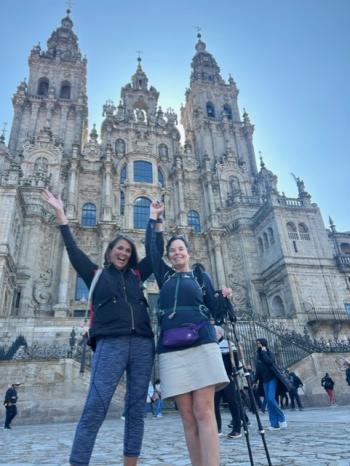 Andrea Neilsen and Lonnie Gisi’s victory photo with the Santiago de Compostela Cathedral in the background. Courtesy photo
Andrea Neilsen and Lonnie Gisi’s victory photo with the Santiago de Compostela Cathedral in the background. Courtesy photo
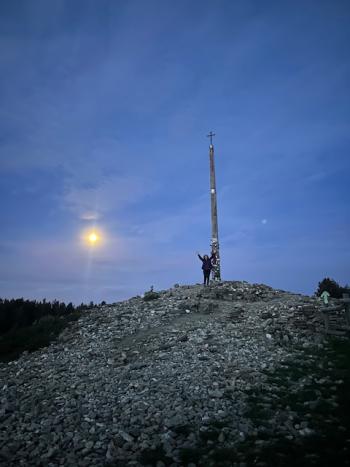 The Iron Cross. Andrea Neilsen photo
The Iron Cross. Andrea Neilsen photo
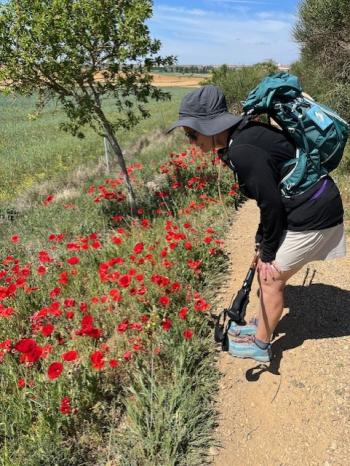 Courtesy of Andrea Neilsen
Courtesy of Andrea Neilsen
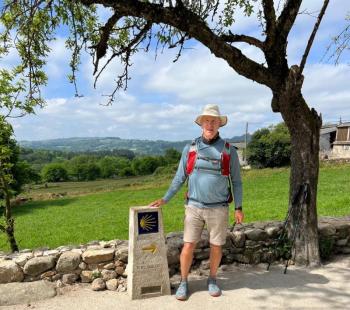 Mark Spencer en route to Galicia. Courtesy photo
Mark Spencer en route to Galicia. Courtesy photo
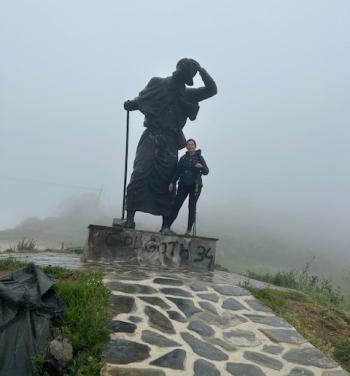 Bronze sculptures are found on many of the pilgrimage routes to Galicia. Courtesy of Andrea Neilsen
Bronze sculptures are found on many of the pilgrimage routes to Galicia. Courtesy of Andrea Neilsen
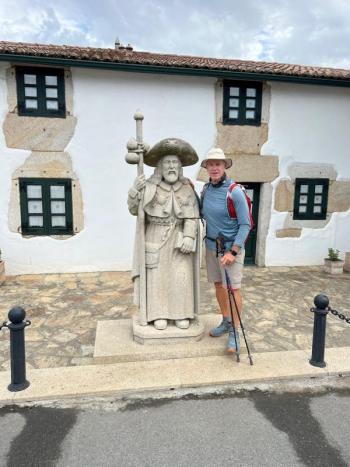 Courtesy of Mark Spencer
Courtesy of Mark Spencer
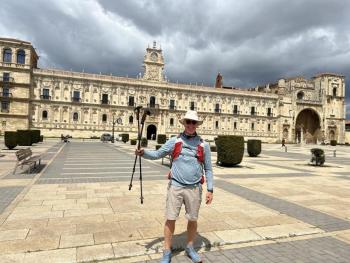 Mark Spencer’s “I did it!” photo with the Santiago de Compostela Cathedral in the background. Courtesy photo
Mark Spencer’s “I did it!” photo with the Santiago de Compostela Cathedral in the background. Courtesy photo
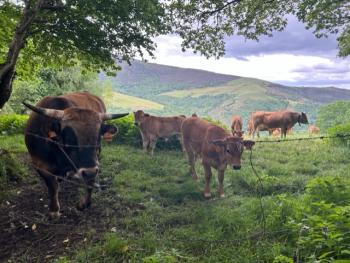 Andrea Neilsen photo
Andrea Neilsen photo
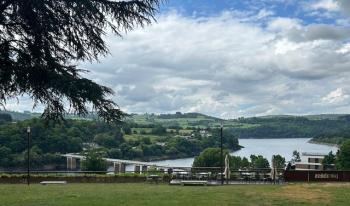 Andrea Neilsen photo
Andrea Neilsen photo
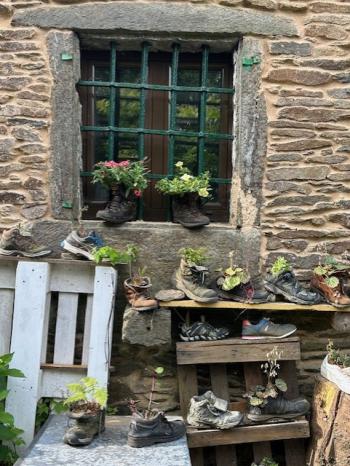 Lost walking shoes become planters along The Way of St. James. Andrea Neilsen photo
Lost walking shoes become planters along The Way of St. James. Andrea Neilsen photo
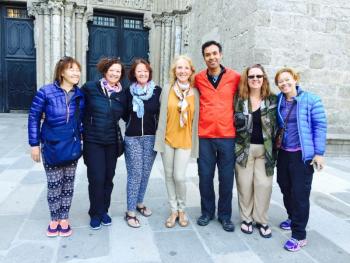 Alina Blakesley, center, with a group of fellow pilgrims in 2015. Courtesy photo
Alina Blakesley, center, with a group of fellow pilgrims in 2015. Courtesy photo
 Courtesy of Alina Blakesley
Courtesy of Alina Blakesley
The word “pilgrimage” may evoke images of people on a quest, walking or visiting spiritual places. searching for forgiveness, discovering their purpose, to find God, or time to escape the demands of daily life.
Three major locations people are drawn to for this are Rome, Jerusalem and Santiago, with the Santiago de Compostela Cathedral in Galicia, southwest Spain. For centuries, it has been known as the location of the remains of the Apostle St. James. Pilgrims reach the cathedral by walking the Camino de Santiago, best known as The Way of St. James.
The most popular route is just under 500 miles long, beginning in St. Jean Pied de Port, France, moving westward through the Pyrenees and continuing westward across Spain. Those who walk The Way get a “passport book,” which is then stamped at hostels, restaurants, etc., who design their stamp so no two are alike, en route to Galicia. The Passport is necessary to stay at one of the hostels, pensions (small hotels), or hotels along The Way that cater to pilgrims. Some lodging owners only cater to pilgrims.
Three residents of Bayville walked The Way of St. James to the Cathedral: Alina Blakesley in 2015 from about April 5-May 15; retired airline pilot Mark Spencer’s 34-day journey began April 11, 2022 with fellow retired pilot Mark Wynz; and Bayville’s Andrea Nielsen and friend Lonnie Gisi of Barters Island and Texas, took their pilgrimage this year, from April 9 to May 7. All three Bayville residents began from St. Jean Pied de Port.
The 2010 film “The Way” starred Martin Sheen on a pilgrimage starting from the same French location the Bayville residents would later use. The film piqued their curiosity and interest.
Spencer was just retiring after decades as an airline pilot. “I knew there was a big change coming, so I wanted a kind of reset of my life,” he said. “And to have some time with myself to think about what was ahead. And it was good. Perfect.”
Blakesley had friends on Barters Island who invited her to watch a video of their pilgrimage on The Way of St. James. “(The video) showed all these wonderful restaurants and wine ... Which is not at all what's on the road, right?” Blakesley said, laughing. “Yeah. It wasn't so much! But then a friend from California said she was going with another friend. She kind of helped to get me started in that direction. And actually, we did all start together, but we didn't finish together.”
Neilsen had heard about the pilgrimage through Spencer and Blakesley, but never thought she would be able to get away for a month to do it herself – until Gisi told her about the pilgrimage she had been booking for herself and suggested Neilsen might want to go, too. Gisi worked with a travel agent who was booking rooms at pensions for each evening. Pension rooms offered pilgrims private bathrooms and many had air conditioning. Plus, Gisi was using a forwarding service to get their luggage to each pension along The Way rather than carry everything on her back for 500 miles. Spencer also used a forwarding service.
“About a month before Lonnie was leaving, I decided to go,” Neilsen said. “It was a very spontaneous thing. She just added me to the reservations. The walk was difficult enough without carrying your belongings on your back. We walked 12-18 miles a day.”
Decision made, Neilsen found one Facebook page in particular (there are many), “Camigas – A Buddy System for Women on the Camino” – where women shared their experiences, and information about what to pack and what to leave at home. And, like Spencer and Blakesley, Neilsen watched numerous videos on YouTube, and read about the Camino on websites.
As pilgrims discover on the Camino, there would be plenty of time for thinking, but it was not until another friend told Spencer he was going to end up walking alone, at some point, that he even considered what that might be like.
“And you know, after a certain time you want to walk alone, it's an amazing environment to just clear your head. Or, maybe there are some things you want to confront when you’re on the trail. Maybe you receive messages, like private in your head, right?” said Spencer. “Then there are times where you come up on people and you're like, ‘I need conversation for an hour.’ But the incredible moments, the incredible moments come when you're totally by yourself after hours of walking. And then you have dinner with a group of people and glasses of wine and share friendship in the evening. Just a perfect combination.”
“The walking is like a meditation,” Blakesley said. “I think I wanted, like Spence, time without any responsibilities and just to be open to any kind of intuitive messages. There were some issues that I had. And I just wanted to sort of clarify them. And so that was sort of basically a time of going inward, yeah. I stopped in churches. I cried. I was very moved by the people and their wanting to heal. The energy when you go into a church, I mean, it’s just very uplifting, spiritual.”
Blakesley, who did carry her belongings with her, stayed in hostels that usually had bunk beds. She shared the importance of rushing to get a bottom bunk in case of late night bathroom runs. Some hostels had room for up to 100 people, which she enjoyed greatly. “It is fun to be that close to people. And it felt very normal to be with like four other young Spaniards,” she said. “The people out there are seeking the same things, so they're very adventurous.”
The hostels she stayed at had WiFi, enabling Blakesley and husband Robert back in Bayville to visit via FaceTime almost daily. “I felt as if he was on the journey with me,” said Blakesley. “He wrote poetry and prose about my experiences, watched the videos I sent, and YouTube videos. He was very much with me, although he was at home watching the cat and the dog. It was very, very, very special to have that connection.”
The paths of The Way of St. James are lined with scallop shells at every starting point in the world – France, Italy, Portugal and Spain. The scallop shell is said to be a metaphor, its lines representing the routes pilgrims travel from all over the world. The scallop shell has been identified with the directions marking the paths along The Way of St. James/Camino de Santiago since ancient times; caminoways.com notes that, in French, the scallop is called Coquille Saint Jacques, while in German, scallops are called ‘Jakobsmuscheln’ (James mussels).
Scallop shells start pilgrims on their way and yellow arrows on trees, sidewalks and tiles point them in the right direction as they journey to the Santiago de Compostela Cathedral.
“The Saint Jean Pied de Port, France start route was incredible. Oh, man! So you're in the Pyrenees Mountains in France. Beautiful,” Spencer said. “There were rugged, steep hills and inclines over the French side of the Pyrenees into Spain and Santiago. Day 2 was the most treacherous, a true test of endurance. Steep. And it was rainy and windy. I was on a road, but there are some dangerous, rocky, stony, pathways.”
Neilsen recalled, “Our longest day was 18 miles. The area was desert-like, but lush and beautiful with rivers – oh, it's so beautiful. The middle part is called the Masetta, all flat farmland for 150-200 miles. But, it's really rugged in the beginning. There's three stages: Steep hills, then steep inclines, and really scary steep.”
People living along The Way are willing to help a pilgrim, and sometimes that help comes in the form of their dog. Neilsen and Gisi had come into a small village where the only inhabitants seemed to be a man looking out a window, a woman, and a dog. It was pouring rain at a three-way intersection. Not seeing one of the yellow arrows to point them in the right direction, they chose the paved road, and no sooner had they begun walking on it when the couple’s dog ran toward them barking and stopped in front of them.
“It was like he was telling us not to go that way,” Neilsen said. “So we walked back from the paved road and chose a second of the three options. The dog ran in front of us barking again. He was telling us not to go that way either. The old man came out of the house at this point and sat near the dog. And then Lonnie and I went the third way, which was the correct way. Can you even imagine how many others he’s done that for? We both got a little shiver over that one!”
Spencer recalled the only time he got lost, which he said was “the most amazing hour and a half,” by himself along a riverbed. “And you know, you're not worried. You get really connected with a spiritual awareness that you probably haven't had, at that level, for a long time,” Spencer said. “Probably because in normal life, there's so many sounds, so many distractions. But when you're out there, there are no distractions. Nothing’s out there. You really can get closer to your true nature. So it's really been a good transition for me in my retirement age.”
As a birthday treat to herself, Blakesley decided to have her backpack transported to the next stop at the time, Burgos. She’d been carrying everything on her back for weeks. En route the next day, she and two other pilgrims followed a person who appeared to be on the path, but in fact, was not. Twenty miles later, they realized they were not walking along The Way. This misstep added an extra day to Blakesley’s pilgrimage.
“When I got to Burgos, I could hardly stand. And when I got to the hostel, my backpack wasn't there,” said Blakesley. “And that was like horror because I actually left my passport in it. I think I had the money. And so it took me a while to convince this guy, in Spanish, that I wasn’t leaving until they found my backpack.”
The backpack was eventually found at a different small hotel where Blakesley was able to book a room for a few nights. “The lesson in this is that you have to trust things will work out,” Blakesley said. “And I think all along, because you walk into a town and don't know where you're going, that having trust and faith in things working out has stayed with me, as well as having the capacity to go beyond what you think your physical strength is.”
During her pilgrimage, Neilsen experienced a dreaded foot blister, much to her surprise. Neilsen wore toe socks (individual toes) and walking shoes that were bigger to accommodate the socks. A blister erupted on her big toe after she hurt her ankle, and the blister grew. No one spoke English at the home she and Gisi were staying at, but the woman who owned the house lanced, soaked and dressed the area. Things got a bit complicated as th blister kept returning and Neilsen had to get a special needle to keep draining it. She continued to get care as she continued on The Way, including a couple among a group of Australians she walked with for a while.
“It was almost comical because I was so proud of not having any blisters,” Neilsen said. “And then, on top of that, I realized that I had left my iPad at the house in Pamplona. I figured it was gone, but no; the company moving my bags tracked it within 10 days.”
Blakesley brought a foot kit with her. Blakesley is a certified reflexologist and former owner of Harborside Reflexology and Nail Care in Boothbay Harbor. She had Compede, and foam pads, gauze, scissors and bacitracin. She used the kit to help ease the discomfort or pain experienced by some of the pilgrims at the hostels she stayed in. “Well, it was kind of very special because I saw this poor guy and I thought, he's not going to make it,” Blakesley said. “And so I said, you know, ‘Let me sort of massage your feet a little.’ And lo and behold, he was there (at the Cathedral) before I was!”
There are several significant historic locations along The Way to Galicia, including numerous small Catholic churches, and the ruins of a hospital dating back to 1,100 AD. Of high significance is the Iron Cross, between the towns of Foncebadón and Manjaríns on the Camino Frances. The Iron Cross is about two-thirds of the way to the Cathedral, and is believed to date to the 11th century. The cross stands on a small hill atop a five-foot post. Rocks around it are left by pilgrims, symbolic of burdens they are leaving behind. The stones are either brought by each person on the trip from their home, or picked up during the walk.
Spencer said Americans were the ones who completed the pilgrimage all at one time; Europeans would walk the Camino for a week or two, and then come back another time to finish. “It’s so much easier to travel in Europe, all the countries are not quite as broad as ours. And the trail goes all across Europe; you can be in Paris and see the shells in the sidewalk, highlighting the street that goes right by Notre Dame and then carries on. I hiked with a person that started in Belgium. It took them two sessions. For us, it costs so much to get over there.”
Spencer has plans to walk The Way of St. James at least three more times starting next April with his wife, and then with each one of his daughters.
“I felt confident and brave and strong at the end,” shared Neilsen. “I felt my heart opened up. It was like just so many lovely experiences and sights and nature and people. Sometimes it's almost like these things are like destined for us. There were no coincidences – things happened and you just opened your heart to that. You just accept it. I do it every day now.”
Arriving at the Santiago de Compostela Cathedral, circa 1211, pilgrims take photos with the grand Romanesque landmark in the background and strike celebratory poses. The sound of bagpipes can be heard beyond an archway in the square welcoming pilgrims at their journey’s end. In addition to large meals, wine and celebration, pilgrims attend a mass held just for them. Blakesley noted feeling an “expansion of being” within its walls and Neilsen cried, overwhelmed by the “breathtaking” sight of five monks pulling ropes suspended from the ceiling attached to the Botafumeiro (a thurible or incense burner the size of a small sofa) like a pendulum, releasing incense smoke throughout the sanctuary.
“There are no coincidences on The Way; cool things happen and you just have to accept it,” said Spencer. “So at the end of the journey, after the camaraderie along The Way, the people you met felt like family because we were all in the same place of doing, challenging, and finding ourselves. So, it's almost like you didn't really need your family to be there; you had this Camino family that’s very, very special. You wouldn’t believe how close you felt to people.”
Added Neilsen, “You remember the basics of letting it flow and just asking for what you need. And it's really, really not just a walk. It's weird. And so you get all these people, they're all trying to figure out what’s going through their heads all day long, and then we laugh it up at night. You know, that's what I enjoyed about it.”
“I think what has stuck with me was that trust,” Blakesley said. “Trust that things will work out, that I will have the energy to take that next step. And that has stayed with me. So that's more of a life lesson. I mean, something you learned on the trail that has become part of who you are.”
To learn more about this pilgrimage, visit Followthecamino.com

